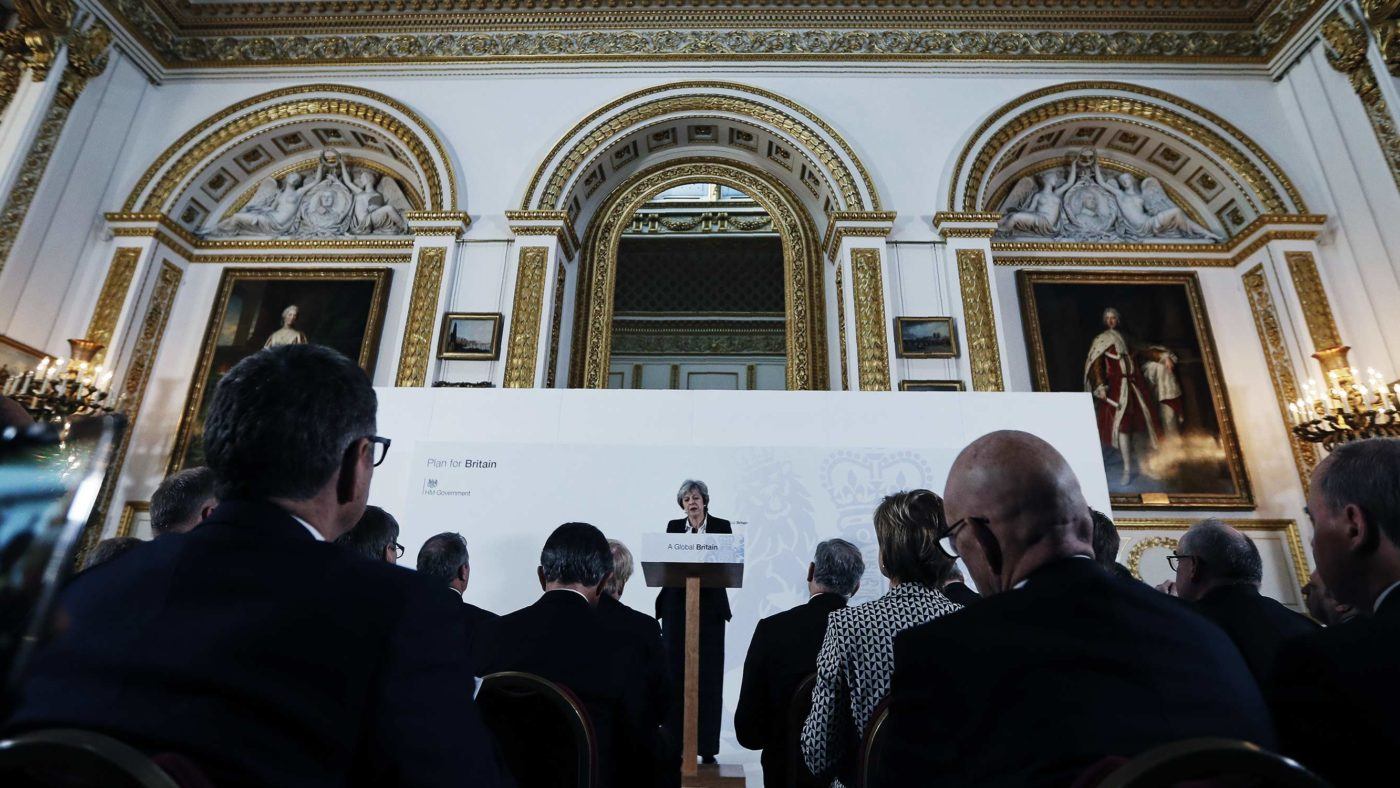So at last we know what Brexit means. In her speech today at Lancaster House, Theresa May could not have been clearer. Britain wants the friendliest and closest possible arrangement with the European Union. But it wants to be free to sign its own trade deals – which means leaving the single market, leaving the customs union, and being prepared to walk away from a bad deal if need be.
There were many striking things about the speech, but perhaps the most important was the shift in May’s rhetoric. Since the start of her premiership, it has been readily apparent that she was defining herself against her predecessor – junking cherished Cameron policies and personnel, while breathing life into ideas (such as the reintroduction of grammar schools) that would have been anathema in his day.
Yet it was not just Cameron she was defining herself against, but Boris Johnson and Michael Gove. When she spoke about the Brexit referendum and the lessons to be drawn from it, the new Prime Minister sometimes sounded closer to Leave.EU than to Vote Leave – not least in terms of the importance of immigration control.
Today, by contrast, the theme of the speech was best summed up by The Spectator’s famous cover arguing the case for Leave: Out, and into the world. Yes, she talked about immigration control. But she talked much more about the need to go global – that this “great moment of national change” would (or should) result in a Britain that is “more outward-looking than ever before”, a “truly global Britain” that is “one of the firmest advocates for free trade anywhere in the world”. Daniel Hannan or Shanker Singham could not have put it better.
“The result of the referendum was not a decision to turn inward and retreat from the world,” May insisted. Rather, it was a chance to build new ties. But we could only do this, she went on, if we liberated ourselves from the constrictions of the single market and customs union – while, of course, retaining the best possible access to them.
For the 48 per cent who voted Remain, this is a bitter pill to swallow. Their hopes for a Brexit that looked as much like the status quo as possible have been dashed – undemocratically so, many of them insist, given that this particular variant of Brexit could not command the confidence of the full 52 per cent who voted Out, or anywhere near it.
As one of those Remain voters, I can see their point. Yet the political logic behind May’s position is unanswerable. A Brexit that did not involve control of the borders, or the freedom to strike trade deals with other countries, wouldn’t be a Brexit at all – just a much worse version of the deal Britain had before. The paradox is that in order for Brexit to work, Mrs May – who was herself a Remainer – has had to take that big, bold leap into the dark.
The kind of Brexit that Mrs May envisages will, of course, be a much more difficult one to negotiate. And what is particularly intriguing is that there again Mrs May has taken her predecessor as a model of what not to do.
David Cameron’s approach was to take Britain’s existing arrangements with the European Union as a baseline, and then seek to adjust them: to start close, and try to get some distance. Theresa May’s is to start with the kind of relationship she wants to get to, and work backwards from there: to take complete separation as the baseline, and rebuild what connections we can where we can. And if there is not a deal, then very well: alone.
Of course, Mrs May insisted, it will not come to that. For European nations to refuse a deal, for them to exclude Britain from any privileged access to the single market, would be “an act of calamitous self-harm”. And she repeated Philip Hammond’s threat that under such circumstances, Britain would have no choice but to take the Singapore option – becoming a low-tax, low-regulation state that undercut its neighbours at every turn. (To which many CapX readers will doubtless ask: why not do that anyway?)
In the months to come, this strategy may be called into question. By speaking at the very start of her speech about building a better country for our children and grandchildren, Mrs May explicitly acknowledged that there may – will – be short-term pain. Certainly, the decision to go for our own bespoke deal adds hugely to the complexity of the Brexit arrangements, even if a transitional deal can be put in place.
As the trickle of financial institutions to Paris or Dublin threatens to become a flood, as the representations come in from this sector or that industry, there may be moments when she begins to regret her choice – when the bafflement in European capitals at Britain’s apparent appetite for economic self-destruction finds an echo on these shores.
But this speech was one of the rare moments in politics when what a politician says has real and lasting meaning. This is Brexit. This is what Brexit means. It may not be the Brexit that particular people campaigned for, or voted for, but it is the Brexit that Theresa May is giving us.
It is a Brexit that is global rather than nativist, that looks forward and out rather than back and in. It is a Brexit that is simultaneously the most difficult option on offer and the most exciting. Getting there will certainly not be easy. But as of today, Britain’s course is firmly set.


